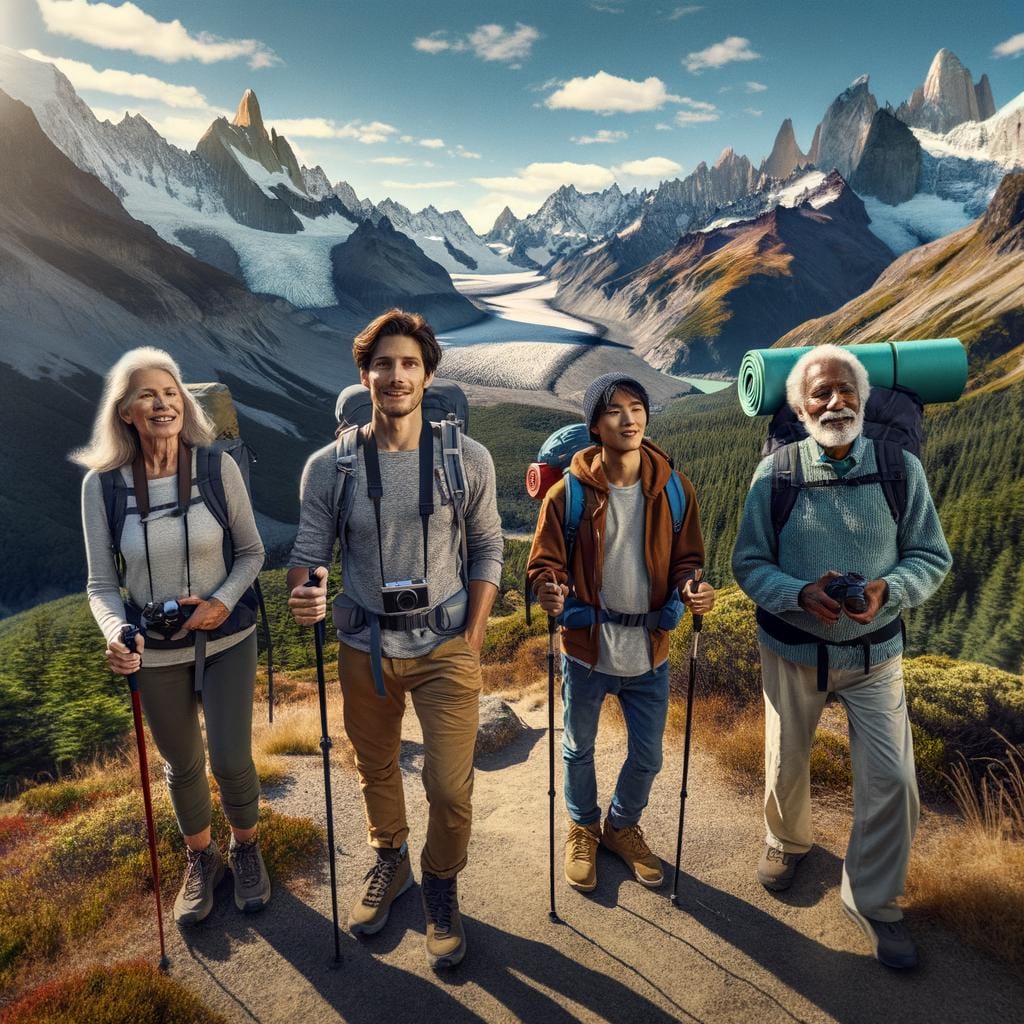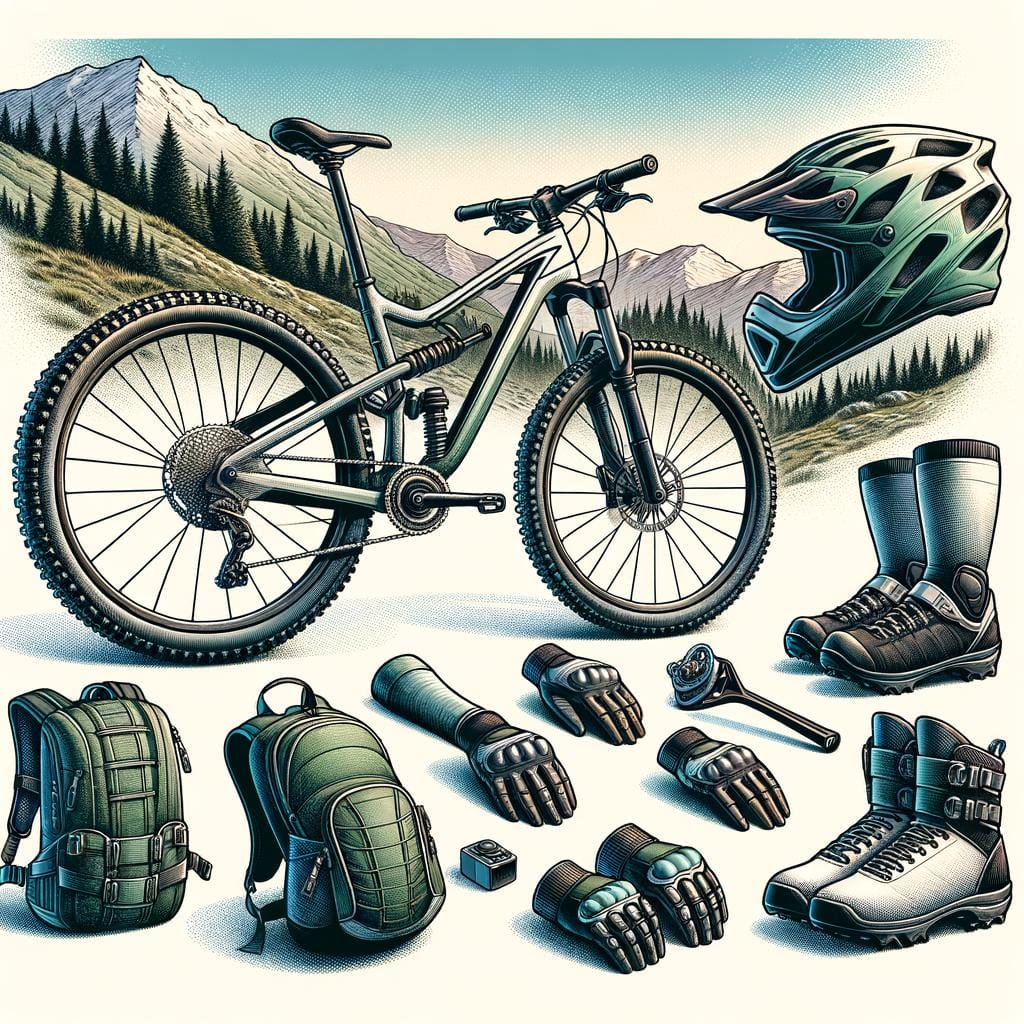Mountain biking, a popular outdoor recreational activity, offers enthusiasts the exhilarating experience of navigating rugged terrains on two wheels. The sport has gained significant popularity in recent years, attracting individuals seeking an adrenaline rush and a connection to nature. Mountain biking enthusiasts traverse varying landscapes, from rocky mountainsides to lush forests, all while pushing themselves physically and mentally.
As an outdoor adventure sport, mountain biking provides numerous benefits beyond just the excitement of riding through challenging trails. Engaging in this activity can improve physical fitness by enhancing cardiovascular endurance, muscle strength, and overall agility. Additionally, the mental health rewards are substantial as riders find solace in the tranquility of nature and the focus required to navigate obstacles along the way.
For those looking to delve into the world of mountain biking, it is essential to equip oneself with the necessary gear to ensure a safe and enjoyable experience. From helmets and protective pads to specialized footwear and hydration packs, having the right equipment can make all the difference when conquering off-road trails. Understanding the significance of proper gear is paramount in maximizing performance while minimizing risks associated with rough terrains.
Benefits of Mountain Biking
Mountain biking offers a plethora of benefits for both physical and mental well-being, making it a popular outdoor activity for individuals of all ages. One key advantage of mountain biking is the cardiovascular workout it provides. Riding on diverse terrains challenges the heart and lungs, improving overall cardiovascular fitness. As riders navigate uphill climbs and downhill descents, they engage various muscle groups, including the legs, core, and upper body, leading to increased strength and endurance.
Stress Relief and Mental Health
In addition to physical benefits, mountain biking is known for its positive effects on mental health. The adrenaline rush that comes from conquering challenging trails can boost mood and reduce stress levels. Being surrounded by nature while cycling through scenic landscapes also promotes a sense of peace and tranquility. The focus required to navigate obstacles on the trail can help riders practice mindfulness, further enhancing mental well-being.
Social Connection and Community
Another significant benefit of mountain biking is the opportunity for social connection and building a sense of community. Joining group rides or participating in local mountain biking events allows riders to connect with like-minded individuals who share a passion for the sport.
This sense of camaraderie can lead to lasting friendships and provide a support system for new riders looking to improve their skills. Additionally, being part of a mountain biking community often involves group maintenance days or trail stewardship activities, fostering a spirit of teamwork and environmental stewardship among participants.
Essential Gear for Mountain Biking
When it comes to mountain biking, having the right gear is essential to ensure a safe and enjoyable ride. From protective equipment to tools for maintenance, here is a comprehensive guide to the must-have gear for all mountain bikers.
Protective Gear
One of the most important aspects of mountain biking is ensuring your safety on the trails. Protective gear such as a helmet, gloves, knee and elbow pads are crucial in minimizing injuries in case of falls or accidents. It is imperative to invest in high-quality protective gear that fits properly and offers adequate protection while allowing for comfortable movement.
Apparel
Choosing the right apparel can also make a significant difference in your mountain biking experience. Opt for moisture-wicking clothing that will keep you dry and comfortable throughout your ride. Padded shorts can help cushion your seat on longer rides, while breathable jerseys offer ventilation to keep you cool on hot days. Don’t forget about sturdy shoes with good grip to ensure stability while navigating challenging terrain.
Tools and Maintenance
Being prepared for any mechanical issues while out on the trails is essential. Carry a multi-tool kit that includes wrenches, Allen keys, tire levers, and a chain breaker for basic bike repairs. Additionally, it’s wise to have spare tubes, a pump or CO2 inflator, and a patch kit in case of flat tires. Regular maintenance checks before each ride can help prevent unexpected breakdowns and keep your bike in top condition for optimal performance on the trails.
Choosing the Right Bike
When it comes to mountain biking, one of the most crucial decisions a rider can make is choosing the right bike. With numerous options available on the market, understanding the different types of mountain bikes and finding the perfect fit can greatly impact your riding experience. Here is a comprehensive guide to help you navigate through the myriad of choices:
- Cross-Country (XC) Bikes: Known for their lightweight frame and efficient pedaling capabilities, XC bikes are designed for riders who enjoy long-distance rides and climbing steep terrain.
- Trail Bikes: Versatile and well-rounded, trail bikes are great for a variety of terrain types, including singletrack trails, technical descents, and even some jumps. They offer a good balance between climbing efficiency and descending prowess.
- Enduro Bikes: Designed for aggressive riding on challenging downhill trails, enduro bikes have more suspension travel than trail bikes and excel in technical descents with demanding obstacles.
- Downhill Bikes: Built for extreme downhill racing and freeride activities, downhill bikes feature full suspension with maximum travel to absorb big hits at high speeds while maintaining stability.
Finding the perfect fit for your mountain bike involves considering factors such as frame size, wheel size, suspension type, and components that suit your riding style and preferences. Visiting a local bike shop to get professionally fitted or test-riding different models can help you narrow down your options and ensure that you select a bike that meets your needs.
Remember that each type of mountain bike has its strengths and weaknesses, so it’s essential to match the bike’s capabilities with the type of terrain you plan on riding. Whether you’re cruising smooth flowy trails or tackling technical rocky descents, choosing a mountain bike that suits your riding style is key to enjoying your adventures on two wheels.
Safety First
Mountain biking is an exhilarating outdoor activity that combines physical exercise with a sense of adventure. However, like any sport, mountain biking comes with its own set of risks and challenges. Therefore, safety should always be a top priority for riders hitting the trails.
One of the most important safety tips for mountain biking is to always wear appropriate protective gear. This includes a helmet, gloves, knee and elbow pads, as well as specialized mountain biking shoes that provide good grip on the pedals. These gear items can help prevent serious injuries in case of falls or accidents while riding on rugged terrain.
In addition to wearing proper gear, it’s crucial for mountain bikers to familiarize themselves with the trail they plan to ride on. This includes understanding the level of difficulty, any potential hazards or obstacles along the way, and ensuring they have the necessary skills to handle the terrain.
It’s also recommended to ride with a buddy or in a group whenever possible for added safety and support in case of emergencies during your mountain biking adventures. Stay safe and enjoy exploring nature on your bike.
Top Mountain Biking Destinations
Mountain biking enthusiasts are always on the lookout for the next best trail to explore and challenge their skills. When it comes to finding picturesque locations for riding, there are countless destinations around the world that offer breathtaking views and thrilling paths for cyclists to enjoy.
One such destination is Moab, Utah, known for its red rock landscapes and diverse terrain that cater to riders of all levels. With trails like the famous Slickrock Trail and Porcupine Rim Trail, Moab offers a unique mountain biking experience in a stunning natural setting.
For those looking to experience mountain biking in a more tropical environment, Costa Rica is a top choice. The country’s lush rainforests and volcanic landscapes provide a backdrop like no other for adventurous riders. Trails like Arenal Volcano National Park and Rincon de la Vieja National Park offer challenging routes amidst stunning scenery, making Costa Rica a must-visit destination for mountain biking enthusiasts looking for an exotic experience.
Another notable location for mountain biking is Whistler, British Columbia, renowned for its world-class trail network and mountain biking culture. With hundreds of kilometers of trails ranging from beginner-friendly to expert-level descents, Whistler has something to offer every rider.
The Whistler Mountain Bike Park is a mecca for downhill enthusiasts, while cross-country riders can explore the expansive network of trails that wind through old-growth forests and alpine meadows. Whether you’re seeking adrenaline-pumping descents or scenic rides through nature, Whistler has it all.
| Destination | Key Features |
|---|---|
| Moab, Utah | Red rock landscapes, diverse terrain, iconic trails like Slickrock Trail |
| Costa Rica | Lush rainforests, volcanic landscapes, challenging routes in national parks |
| Whistler, British Columbia | World-class trail network, downhill options at Whistler Mountain Bike Park |
Training Tips for Beginners
When embarking on the exhilarating journey of mountain biking, beginners may feel overwhelmed with the technical skills and physical demands required to navigate rugged terrains. However, with determination and practice, even novice riders can gradually build their skills and endurance to conquer challenging trails. Here are some valuable training tips for beginners looking to improve their mountain biking abilities:
- Start Slow: It’s essential for beginners to begin at a comfortable pace and gradually progress as they become more confident in handling their bikes. Trying to tackle advanced trails right away can lead to frustration and potential injuries.
- Focus on Technique: Proper technique is crucial in mountain biking, especially when it comes to body positioning, shifting gears, braking, and navigating obstacles. Taking the time to learn and master these fundamental skills will greatly enhance your riding experience.
- Interval Training: Incorporating interval training into your routine can help boost your cardiovascular fitness and endurance. Mix short bursts of high-intensity riding with periods of rest or lower intensity to improve your overall performance on the trails.
As you progress in your mountain biking journey, consider seeking guidance from experienced riders or joining a local cycling club for valuable tips and support. Remember that consistency, patience, and dedication are key factors in building both skills and endurance for this physically demanding sport. With each ride, you’ll not only improve your fitness levels but also gain confidence in tackling new challenges on the trails.
Ultimately, mountain biking is not just a physical activity but also a mental one that requires focus, determination, and resilience. Embrace the learning process, celebrate small victories along the way, and don’t be afraid to push yourself out of your comfort zone. By following these training tips for beginners, you’ll gradually build the strength, agility, and stamina needed to truly enjoy the thrill of mountain biking while exploring nature’s beauty in its rawest form.
Sustainability in Mountain Biking
Mountain biking is not just a thrilling outdoor activity, but it also offers the opportunity to connect with nature and promote sustainable practices. As more and more people take up mountain biking, it is essential to ensure that we are being responsible stewards of the environment. By adopting eco-friendly practices while enjoying the trails, we can help preserve our natural landscapes for future generations to enjoy.
One of the key aspects of sustainability in mountain biking is respecting trail etiquette and staying on designated paths. By sticking to established trails, riders can minimize soil erosion, protect fragile plant life, and avoid disturbing wildlife habitats. Additionally, practicing Leave No Trace principles by packing out all trash and waste helps keep our trails clean and preserves the pristine beauty of our outdoor spaces.
Furthermore, supporting local trail maintenance organizations and volunteering for trail upkeep efforts is another way to contribute to sustainability in mountain biking. By donating time or resources to help maintain trails, riders can ensure that these valuable resources remain accessible for years to come.
Remember, the joy of mountain biking comes not only from conquering challenging terrain but also from appreciating the natural beauty that surrounds us. Let’s do our part to protect that beauty for future generations of mountain bikers to enjoy.

An avid outdoor enthusiast, writer, and environmental advocate who has spent over two decades exploring the world’s most breathtaking landscapes. With a background in environmental science and a passion for adventure, Frances combines her love for nature with her talent for storytelling to inspire others to embark on their own outdoor journeys.





